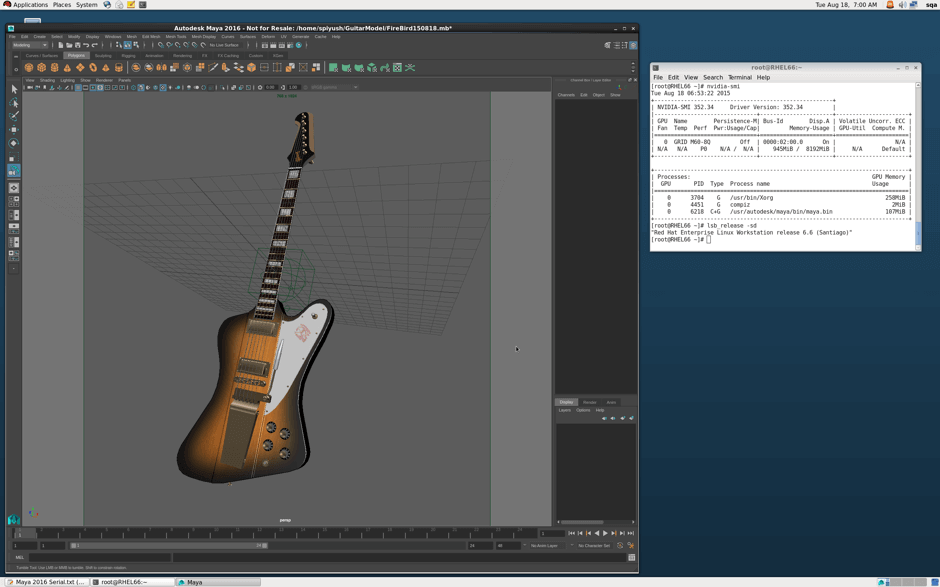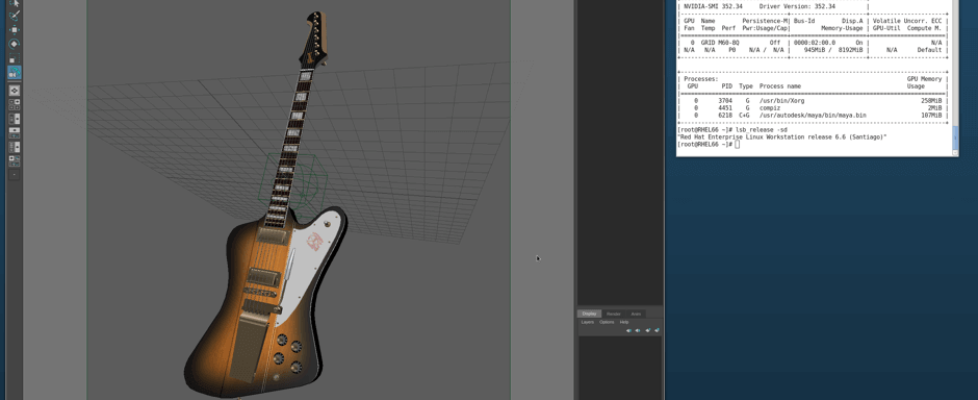VMware releases Horizon 6.2.1

VMware has released Horizon 6.2.1, and they have made some improvements to the 3D graphics capabilities that have been available in Linux desktops since Horizon 6.2.
The ability to run specialized 3D applications on Linux desktops is critical for organizations in the oil, gas, hardware design, manufacturing, and entertainment industries. VMware Horizon 6.2 is the first major desktop virtualization solution to support all popular 3D graphic technologies, including Virtual Shared Graphics Acceleration (vSGA), Virtual Dedicated Graphics Acceleration (vDGA), and NVIDIA GRID vGPU with GRID 2.0 for both Windows and now Linux. vSGA and vDGA need an NVIDIA GRID K1 or K2 card, and vGPU requires an NVIDIA M60 card with GRID 2.0.
You can access 3D remote Linux desktops with VMware Horizon Client for Windows, VMware Horizon Client for Mac, or VMware Horizon Client for Linux.
Linux desktops in VMware Horizon 6.2.1 include the following new features:
Clipboard Redirection, Also Known as Copy and Paste
With clipboard redirection, you can now copy and paste plain text, rich text, or images in Rich Text Format (RTF) between a local client and a remote Linux virtual desktop.
One important reason that organizations deploy virtual desktops is for intellectual property (IP) protection. Linux desktops in Horizon 6.2.1 enable administrators to control clipboard redirection. An administrator can set policies to allow one-way clipboard redirection (client to remote desktop, or remote desktop to client) or two-way clipboard redirection, or to disable clipboard redirection entirely by updating settings in the /etc/vmware/config configuration file. See Setting Up Horizon 6 for Linux Desktops for more detailed information.
In Horizon 6.2.1, clipboard redirection is officially enabled on Red Hat Enterprise Linux 6.6 Workstation x86_64 and CentOS Linux 6.6. You can also enable clipboard redirection on Ubuntu by installing the libexpat1 library manually; however, this is not officially supported.
Single Sign-On
With single sign-on, you do not need to enter the account and password twice to log in to a Linux virtual desktop. Linux desktops for Horizon 6.2.1 have a secure design for single sign-on, so the user’s credential information is not saved locally or transported across the network explicitly.
The single sign-on feature is currently enabled on Red Hat Enterprise Linux 6.6 Workstation x86_64 and CentOS 6.6 x86_64. Organizations can even integrate Linux virtual desktops with Microsoft Active Directory through Open LDAP. You can use single sign-on with Horizon Client for the Mac, Windows, and Linux platforms.
Smart Card Authentication
Smart card authentication is a mandatory feature for federal agencies and other organizations that have strict requirements about security. Linux desktops in Horizon 6.2.1 support both Personal Identity Verification (PIV) cards and Common Access Cards (CAC) with Red Hat Enterprise Linux 6.6 Workstation x86_64. You can connect the card to a Horizon Client and log in to a remote Linux desktop with the credential information encrypted in the card.
Kerberos Authentication
With Linux desktops in Horizon 6.2.1, the View Connection Server can use Kerberos authentication to authenticate Linux virtual desktops against Microsoft Active Directory after you install the View Agent. You have the flexibility to select the previously supported MD5 digest authentication or Kerberos authentication, according to your business needs.
Consolidated Client Environment Information
Prior to Horizon 6.2.1, Horizon 6 for Linux entered the client environment information, such as client host name, IP address, and so on, into the standard log file, which included other debugging information. This large, complex file was inconvenient for administrators who wanted to use the environment information to control client access to a remote Linux desktop. For example, some organizations used the client host name to determine whether the user was logging in from a certain location. They could then use auto-logout to automatically log that user out after using the desktop.
Now, with Linux desktops in Horizon 6.2.1, the client environment information is saved in one smaller, dedicated file, /var/log/vmware/Environment.txt. The administrator can now easily parse the information to control the deployment of Horizon 6 for Linux.

